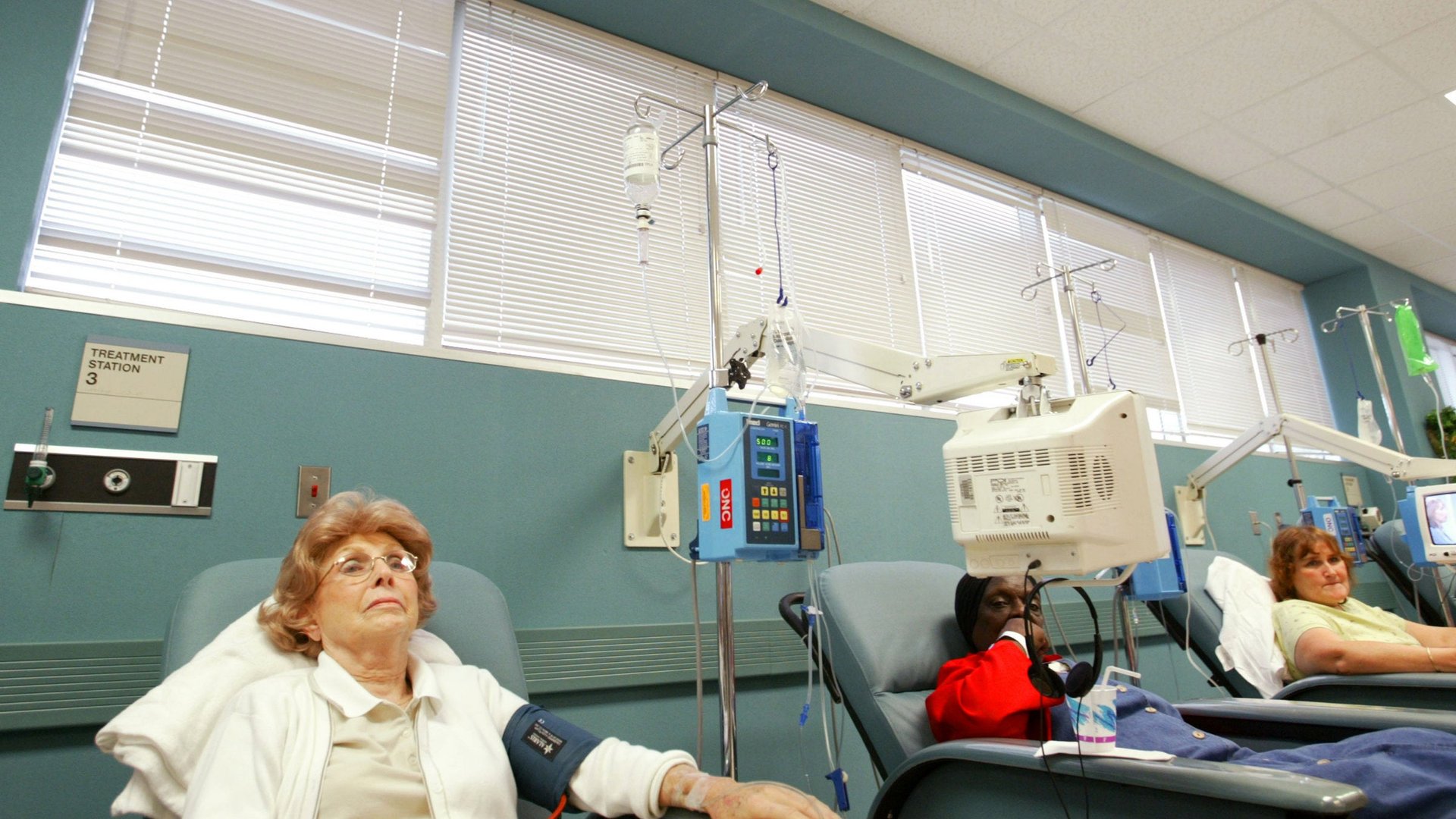Cancer drugs cost a lot, but a few more months with Mom is worth it
It’s easy to bash big pharma. Last year, 11 of the 12 cancer drugs approved by the US Food and Drug Administration were priced above $100,000 a year.


It’s easy to bash big pharma. Last year, 11 of the 12 cancer drugs approved by the US Food and Drug Administration were priced above $100,000 a year.
But life, even a few more months of it, comes at a price.
That’s often the missing component in the debate over the exorbitant costs. Yesterday, more than 100 cancer specialists from around the world decried the high costs of a cancer drug called Gleevec used to treat chronic myeloid leukemia, a deadly blood cancer. In the medical journal Blood, the doctors’ commentary noted that the costs were not only unsustainable but also immoral.
Yet while on an individual scale, the cost of cancer drugs may seem astronomical, Americans also greatly value each year of life. Economists have put that number anywhere from $80,000 to $300,000.
Frank R. Lichtenberg, a professor at Columbia’s Graduate School of Business, has studied the relationship of medical innovation to social value. The newer cancer drugs account for the largest portion of expenditure but also the greatest gains.
Currently, Lichtenberg has a paper under review entitled, “Has medical innovation reduced cancer mortality?” The answer: yes. Drug innovation was the largest lifesaver, accounting for an 8.4% decrease in mortality rate from 2000-2009. His paper cites previous research showing that a “1 percent reduction in cancer mortality would be worth nearly $500 billion.”
This implies that the social value of the reductions in cancer mortality attributable to medical innovations has been enormous, and much greater than the cost of these innovations. For example, the value of the mortality reduction resulting from cancer drug innovation would be $4.2 trillion (= 8.4 * $500 billion).
In the US, costs look unlikely to abate. Reuters reported last year that spending on cancer drugs is expected to reach $173 billion by 2020 (if costs increase only 2% annually). It costs over $1 billion to bring a new medication to market.
Unlike antibiotics for an infection where there are numerous options, many cancer drugs are targeted for a specific type genetic mutation and must be taken sequentially or in combination with other drugs lending to the higher costs.
If the prices really are unsustainable, the market should solve that.
“In general, we think competition is what would restrain price gouging,” says Lichtenberg. ”If these companies that are producing cancer drugs are making obscene profits to perform R&D and all of that, then why don’t other firms enter the market and erode the profits?”